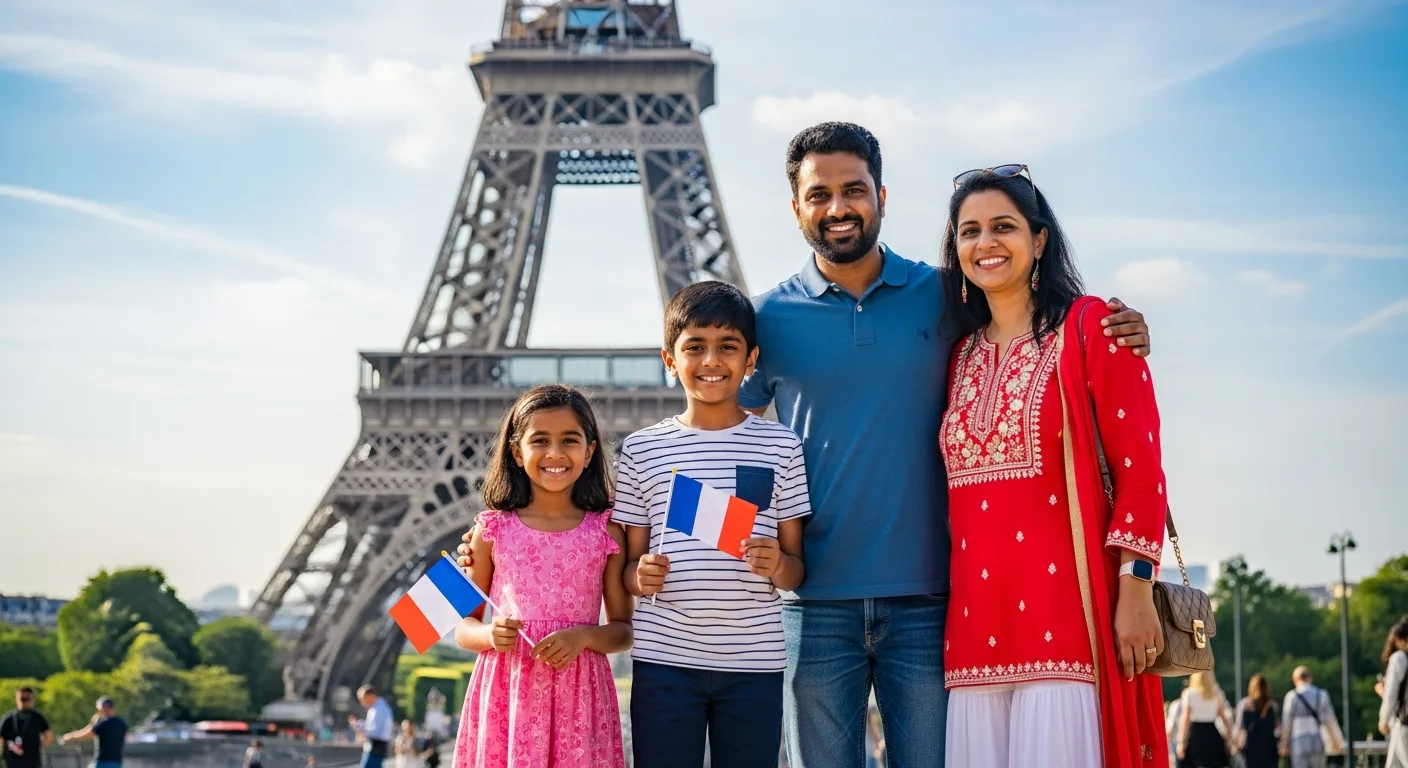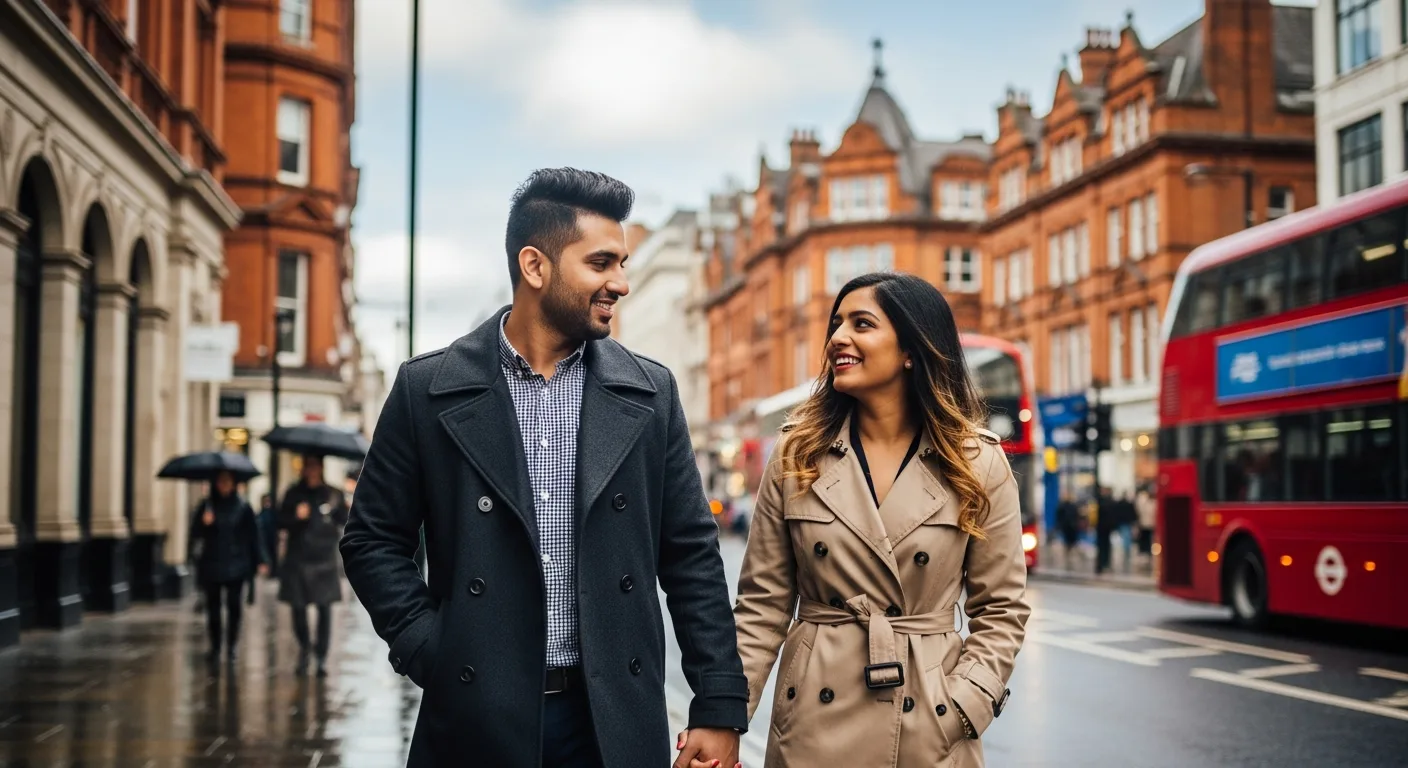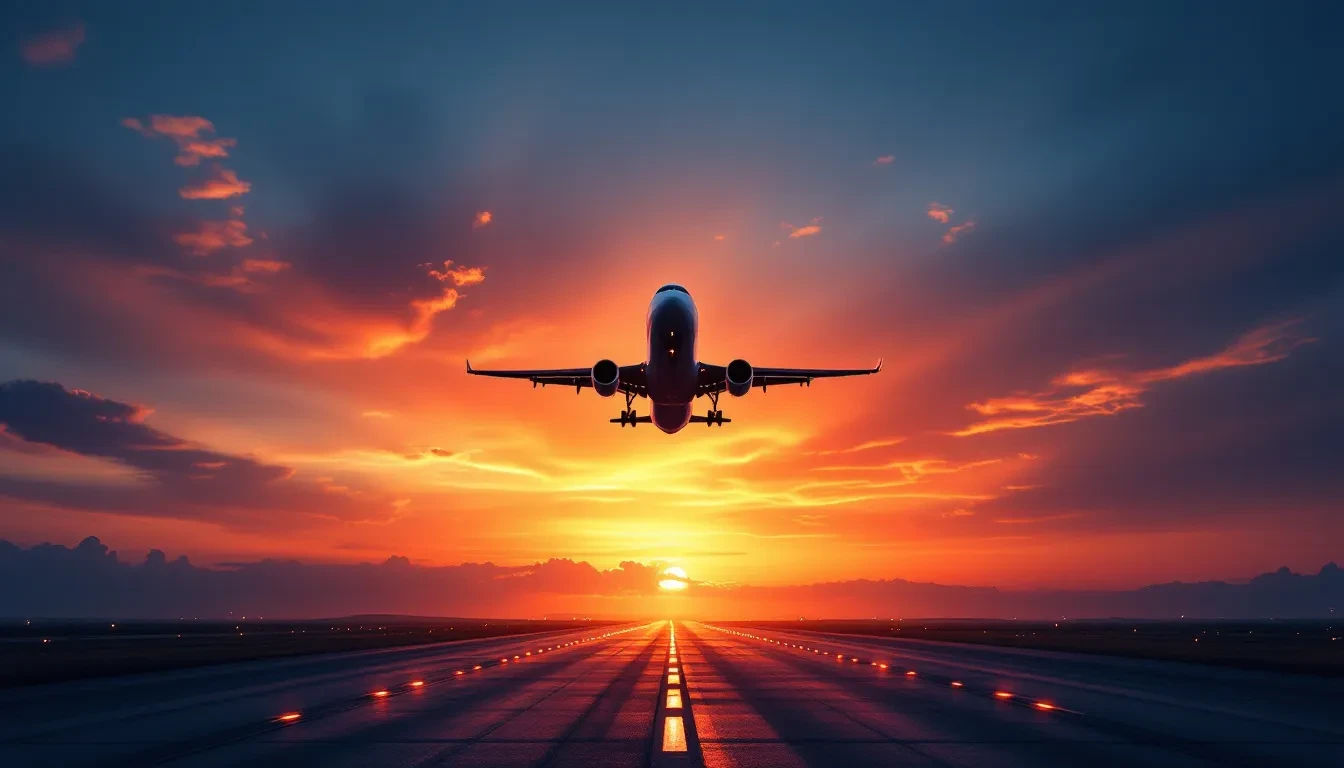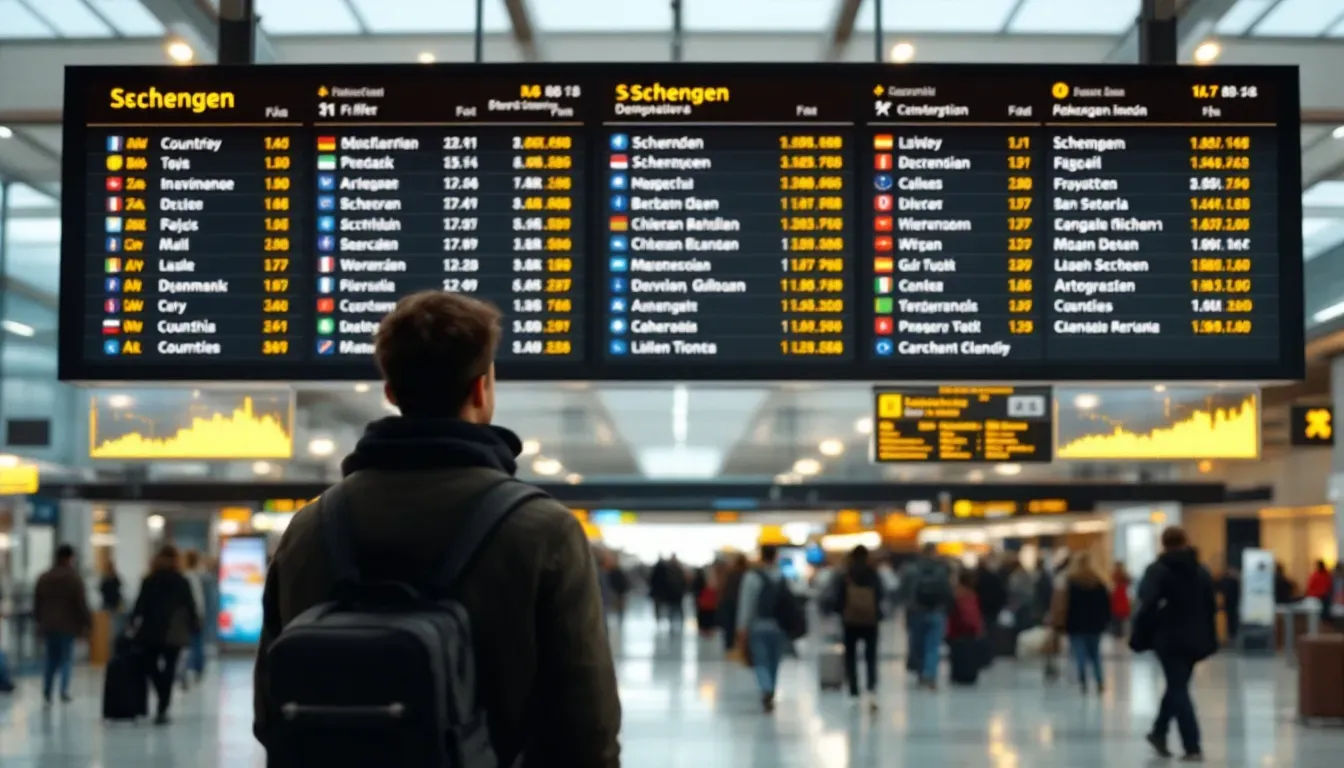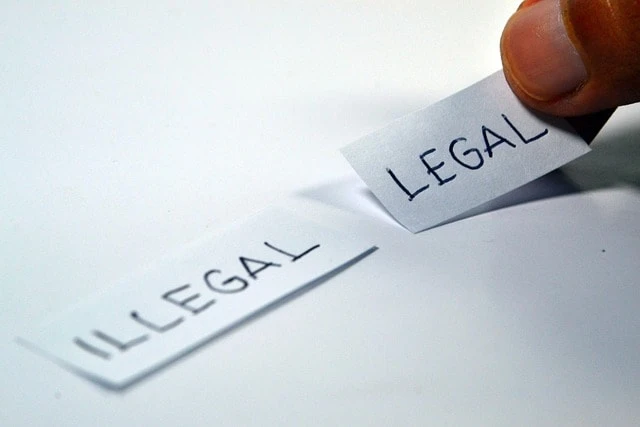Do You Need an Onward Ticket For a B1 Visa?
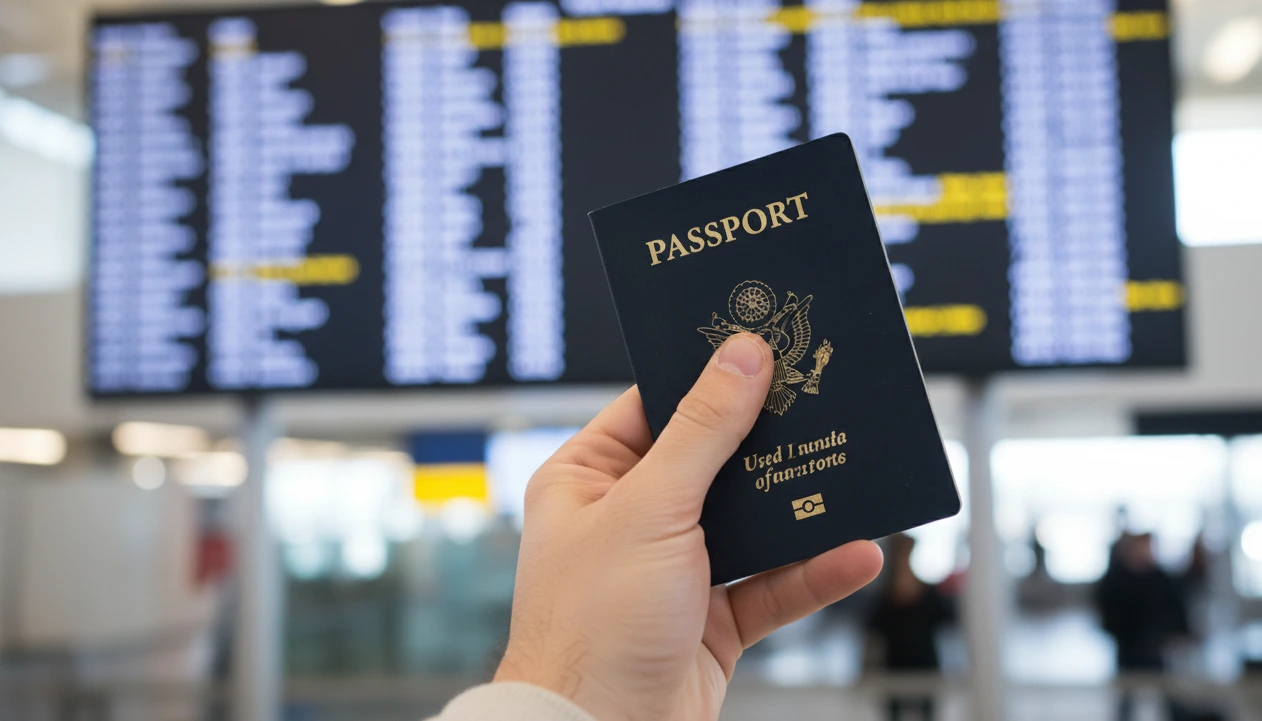
B1 Visa from India in 2025: Do You Really Need an Onward or Return Flight Ticket?
Your B-1 calendar is set. Meetings on one page, DS-160 on another, and a stubborn question in your head: do you really need to buy a ticket before the interview? Short answer: no. Smarter answer: carry a clean, verifiable dummy ticket that shows you plan to depart on time. This simple proof of onward travel can make all the difference in demonstrating your temporary intent to the consular officer.
We’ll show exactly how to do that for Indian applicants at New Delhi, Mumbai, Chennai, Hyderabad, and Kolkata. You’ll learn how to line up flight dates with invitations and conference schedules, keep layovers realistic, and pair your itinerary with the right ties and finances. For more insights on visa preparations, check out our FAQ or dive into related topics in our blogs.
Yes — an onward or return ticket is strongly recommended for a U.S. B1 business visa. While not officially required by the embassy, a verifiable onward ticket with a real Passenger Name Record (PNR) from DummyFlights.com provides proof of intent to leave the United States after your meetings or events. This document helps demonstrate travel credibility, aligns with your DS-160 itinerary, and reduces the risk of rejection during consular review. It’s a safe, legal, and embassy-recognized way to prove you have no plans to overstay your visa.
Last updated: November 2025 — verified against U.S. Department of State B1 visa interview and travel documentation requirements.
We’ll point out red flags that slow files and share simple fixes. Whether you’re a first-time applicant, a startup founder, a family visitor, or a digital nomad on client calls, the playbook is the same. Leave confident, return on schedule. Need a verifiable itinerary for your interview? Try dummy ticket booking. And for a deeper look into our team's expertise, visit our About Us page.
Do You Actually Need A Ticket For an Online Visa Application

You want a clear answer you can act on. You do not need to buy a nonrefundable ticket for a B-1 visa interview. What helps is a reservation that can be verified and that fits your business story from start to finish. Secure a live PNR in minutes with dummy ticket booking. This approach saves you money while providing the proof needed for approval.
To expand on this, let's consider the broader context of U.S. visa requirements. According to the U.S. Department of State, the focus is on intent rather than expenditure. A dummy ticket aligns perfectly here, offering flexibility for last-minute changes common in business travel.
Why A Paid Ticket Isn’t The Requirement You Think It Is
Consular officers are not judging your ability to hunt for deals. They are checking temporary intent. A live reservation with a record locator shows you plan to arrive, complete meetings, and fly out soon after. It signals intent without locking cash into a fare that might change.
Keep one rule in mind. If your reservation is checked, the dates should match the version of your story that appears everywhere else. This consistency is crucial, especially for applicants from high-volume posts like those in India, where officers review hundreds of cases daily.
Keep Your Dates Singing From The Same Sheet
Your DS-160, invitation letter, agenda, and reservation should align. That means:
- Land before the first meeting.
- Depart shortly after the last scheduled item.
- Place hotels near meeting addresses.
- Keep internal flights consistent with your agenda.
If a summit shifts by two days, update the booking and regenerate the PDF. Small timing tweaks are fine. Sudden city swaps without a business reason are not. For instance, if your original plan had you in New York for a client pitch, shifting to Los Angeles without an updated invitation could raise flags. Always document changes with emails or revised schedules to maintain credibility.
Round Trip Or Only Onward: What Reads Stronger
A round-trip that matches your agenda usually looks cleaner. You show a return to India that sits close to your last appointment. That supports temporary intent.
Onward-only can still work if you have credible onward plans. For example, a Seattle client week followed by a confirmed Canada visit. Back this up with emails, invites, or registrations. The key is coherence, not a specific shape of itinerary. In practice, many Indian applicants opt for round-trips via familiar hubs like Dubai or Doha to keep things straightforward and verifiable.
Build A Reservation For B-1 Visa That Looks Real To An Officer’s Eye
Think like a traveler, not a spreadsheet. From India, common routes pass through DXB, DOH, AUH, FRA, LHR, or CDG, or nonstop where available. Pick connections that a real person would take. Avoid two-hour sprints across unfamiliar hubs before a board meeting the same afternoon.
Include:
- Logical city pairs and flight numbers.
- Sensible layovers and time zone awareness.
- Internal U.S. hops only when the agenda demands them.
If your calendar shows a client in New York and another in Washington the next day, a JFK to DCA hop makes sense. A midnight arrival and 8 a.m. pitch does not. To illustrate, a typical itinerary might involve a 14-hour flight from Mumbai to JFK with a 4-hour layover in Frankfurt, allowing ample rest before your first meeting.
The India Lens: What Posts Commonly Notice
Applications from India often shine when the business purpose is precise. Client onboarding, audits, vendor due diligence, trade fairs, investor reviews. All of these are normal B-1 reasons.
What raises questions:
- Open-ended stays with vague goals.
- Tourism is packed into the middle of a business week.
- Long gaps between meetings with no explanation.
If you want a quick weekend in Boston after work wraps in New York, state it. Keep the return soon after. That reads as normal life, not a relocation attempt. Posts in Chennai and Hyderabad, for example, frequently approve cases with clear tech conference itineraries, but scrutinize those with unexplained extensions.
Interview Day Reality Check
Walk in with a reservation that is still live. Do a morning check on the airline website. Carry a simple one-page trip brief that explains:
- Dates and cities.
- Who are you meeting?
- Why does the sequence make sense?
- When you return to India.
This is not a script. It is your anchor if an officer asks for clarity. Many applicants find that preparing this brief the night before helps solidify their narrative, reducing nerves during the actual interview.
When Plans Move, Move Your Paper
Meetings shift. Conferences reissue schedules. When that happens, align your reservation, hotel nights, and internal segments. Keep a light change log. Version 1, Version 2, Version 3 with dates. If asked, you can show that the story evolved for normal business reasons.
If your interview is far out and the hold expires, refresh the booking. The goal is not to freeze time. The goal is to keep documents consistent on the day you are seen. Tools like dummy tickets make this seamless, allowing updates in under 10 minutes without extra costs.
Students, First-Timers, Family Visitors, Digital Nomads: Small Tweaks, Same Core
- Students on short academic industry visits: anchor the reservation to your workshop dates and department invite. Return right after deliverables.
- First-time applicants: keep routes simple. One hub, one final U.S. city, if you can. Complexity invites questions.
- Family visitors attending a graduation or wedding tied to business meetings: place the personal event at the end, then return. Keep days reasonable.
- Digital nomads meeting clients: show focused workdays and a clear sign-off. Avoid a coast-to-coast zigzag that looks like a leisure loop.
For digital nomads, emphasizing remote work setups in India—such as ongoing client contracts—strengthens the case for return. Similarly, students can include enrollment proofs to highlight their primary commitments back home.
After Visa Issuance, Buy Confidently
Once approved or once dates firm up, convert the reservation to a purchased ticket. Check fare rules from India, including minimum stay and advance purchase. Keep the final ticket close to the itinerary you showed. Minutes or a different connection is fine. A whole new city list is not. This step ensures compliance and avoids any post-approval issues at the port of entry.
Quick Mistakes To Skip
- Holding a one-way ticket with a return “later” and no proof of next steps.
- A red-eye that lands at 6 a.m. with an 8 a.m. meeting across town.
- Domestic U.S. jumps that your agenda never mentions.
- A ten-day buffer “just in case” on a two-day audit.
Get the story straight. Keep the reservation verifiable. Make the return believable. That is the street-smart path for a B-1 from India. To avoid these pitfalls, many turn to reliable services for their dummy ticket needs.
Build A Case That Says “I Will Return On Time” For A B-1 From India
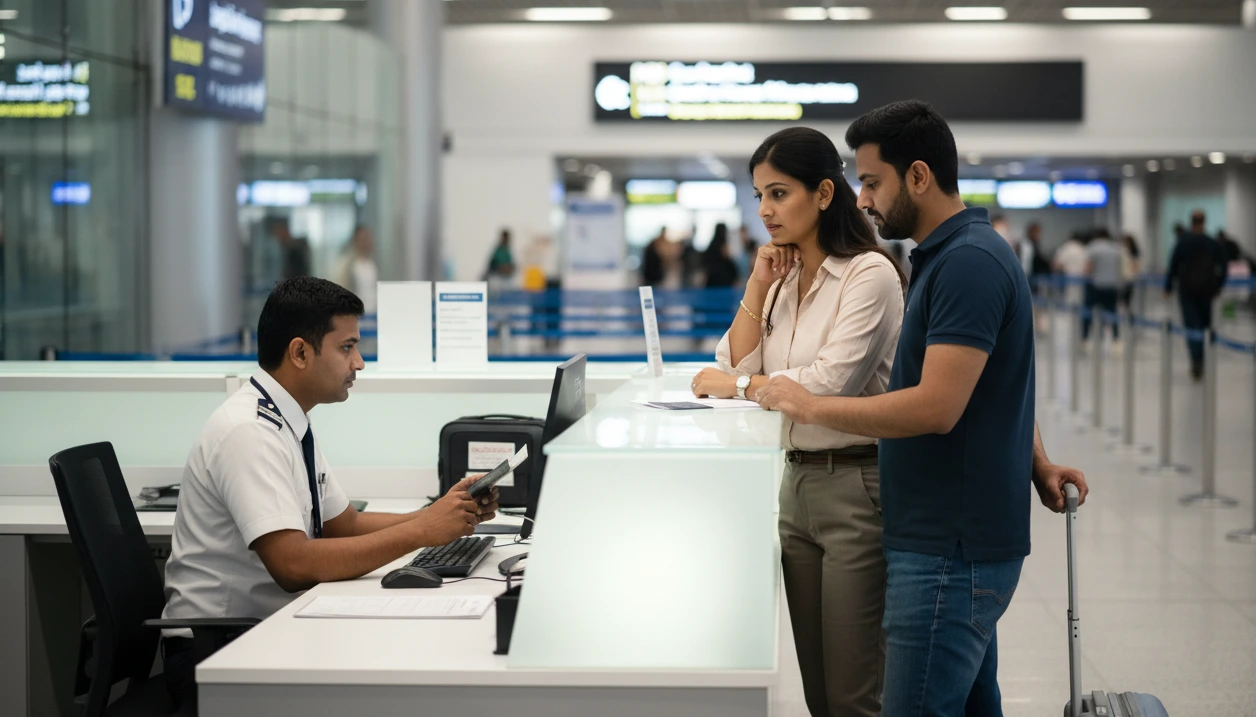
You have the reservation aligned. Now you need the paperwork that makes your temporary intent unmistakable. Think of this section as your checklist to prove purpose, ties, and money in a way an officer can grasp in under a minute. Keep your DS-160 dates aligned and book a dummy ticket.
Expanding on ties, Indian applicants often benefit from showcasing family obligations, property ownership, or community involvement. These elements, when documented briefly, reinforce the narrative of a life rooted in India.
Show A Purpose That Lives On A Calendar, Not In Vague Promises
Your business reason should read like a schedule. Put dates and addresses on paper so the story is easy to verify.
- Invitation on company letterhead with meeting dates, on-site addresses, and host names with titles.
- A day-by-day agenda. Five to seven lines are enough. Include time windows and who attends.
- Conference proof. Registration email, badge confirmation, or speaker mail. Add venue details and session times.
- If there are demos or audits, attach a short scope note. What you will do and where.
Keep the tone matter-of-fact. The officer should see why you must be there, when it starts, and when you are done. For tech professionals attending CES or similar events, including session agendas from the official site adds authenticity.
Lock In Ties To India That Pull You Back
Officers look for anchors in India. You want clear, current documents that show you have ongoing work and a reason to return.
If you are employed:
- HR letter with role, salary, and approved leave dates.
- A simple line confirming your return to duty.
- If the company funds the trip, say so.
If you run a business or freelance:
- GST registration and a recent GST return summary.
- MCA details if you are a company.
- Active contracts or invoices that extend beyond your travel window.
If you are visiting clients while on a student or dependent status in India:
- Proof of enrollment or dependent status.
- A note from your department or family context showing you are based in India.
Use current documents. Stale letters look careless. For freelancers, recent PayPal or bank transfers from Indian clients can serve as dynamic proof of ongoing income streams.
Put Your Money Story On One Page
You do not need to flash wealth. You need to show that the trip is covered and that your financial life is rooted in India.
- Bank statements for three to six months. Highlight balances that cover flights, hotels, and meals.
- If the company pays, attach a line in the HR letter or a travel policy snippet.
- Latest ITR or Form 16. For the self-employed, a brief P&L or GST summary works well.
- Card limits or forex arrangements if you are self-funded.
Do not overstuff the folder. Two to three clean proofs beat ten random printouts. Aim for statements showing steady inflows, like salary credits, to demonstrate stability.
Keep Lodging And Local Travel In Tune With Meetings
Your reservation tells a story. Your hotels and internal segments should play the same tune.
- Book hotels near the meeting addresses or the conference venue.
- Avoid red-eye landings before high-stakes sessions.
- If you are visiting multiple cities, group them logically. East Coast together. West Coast together.
- If you must cross coasts, explain it in the agenda. For example, a board meeting in New York followed by a plant audit in Dallas.
Print the hotel confirmation pages that show dates, addresses, and the name that matches your passport. Using apps like Booking.com for verifiable reservations ensures easy updates if needed.
Use Your Travel History As A Strength
Past compliance helps. If you have visas or stamps that show on-time returns, carry them.
- Old passports with Schengen, UK, Japan, or prior U.S. visas.
- Short notes for any recent business trips that mirror this one.
No need for essays. You are just reminding the officer that you travel, work, and return. A clean history of short stays in Europe, for example, can bolster confidence in your B-1 application.
When The Employer Pays Versus When You Pay
Both are fine. Be clear which one applies.
Employer-funded:
- HR letter stating the company covers tickets, hotels, and daily expenses.
- Optional: corporate card line or policy extract.
Self-funded:
- Simple trip budget. Flights, hotels, meals, and local travel.
- Bank statements that support the budget without strain.
Clarity beats complexity. The officer should know who is paying within seconds. For self-funded trips, a basic Excel sheet breaking down costs can simplify this.
Keep Everything Singing In Harmony
Your DS-160, reservation, hotels, internal flights, and agenda should match. If one date moves, update the rest.
A quick way to stay clean:
- Maintain a one-page “master dates” sheet.
- Each time something shifts, update it and re-export the PDFs.
- Name files with versions. Agenda_v2, Reservation_v3, Hotels_v2.
If asked why dates changed, one sentence is enough. The host moved the kickoff. The expo adjusted registration. You adapted. This systematic approach prevents discrepancies that could lead to delays.
Red Flags We See In Indian Files And How You Fix Them
- Open-ended stay for a short task. Fix it with a return near the last meeting.
- Tour days are in the middle of a tight week. Move leisure to the end or keep it minimal.
- The hotel is far from the meeting area. Rebook closer and print the new confirmation.
- Internal U.S. hops that the agenda never mentions. Remove them or add the meetings.
- Cash flow mismatch. If self-funded, right-size the itinerary or show a sponsor letter with proof.
Treat each fix as housekeeping, not drama. Officers reward files that feel organized and honest. In our experience, addressing these early through mock reviews can boost approval rates significantly.
Final Pre-Interview Sweep
Do this the morning of your interview.
- Check the reservation PNR is still live.
- Reconfirm hotel dates and addresses.
- Print the latest agenda and invitation.
- Carry HR or business proofs at the top of the folder.
- Keep your one-page trip brief handy.
That is how you present a file that says you will arrive, do the work, and come home. It is simple, it is coherent, and it reads like the truth. Remember, preparation like this not only aids approval but also builds confidence for the journey ahead.
Craft A Reservation That Survives Questions At The Window And The Airport
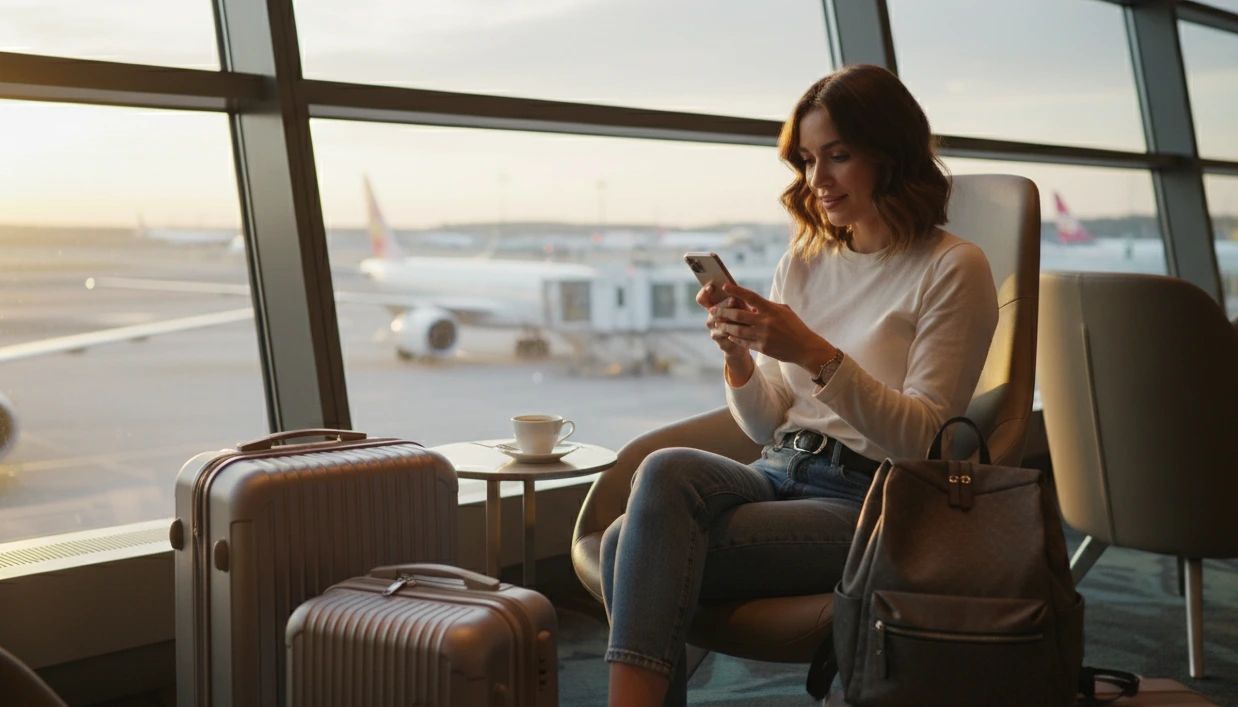
You want your itinerary to tell a clean story from application to arrival. The goal is simple. Show that you will enter for business, finish fast, and return to India on time under the B1 visa rules. Update travel dates anytime with hassle-free dummy ticket booking.
To further safeguard your application, consider how secondary inspections at U.S. ports work. CBP officers may request the same proofs, so consistency across all stages is key.
Make Your Dates And Routing Feel Human, Not Mechanical
Pick flight timings that match real workdays. Land a day before meetings. Leave soon after the last commitment. Keep connections sensible via the Middle East or Europe if needed, with one change where possible. If you add a domestic hop, make sure your agenda mentions that city and meeting.
This is where your visa application benefits from coherence. Align the reservation with your DS-160, invitation email, hotel nights, and internal segments. When you update one, refresh the rest. For winter travel, factor in potential delays by adding realistic buffers without extending stays unnecessarily.
Mark The Lines Between B-1 And B-2 So You Don’t Blur Your Story
Your trip is business travel, not tourism. That means you attend a business convention, meet business associates, inspect industrial equipment, and close deals you negotiated offshore. You do not perform services for a U.S. client on site, and you do not appear before a paying audience on arrival. If you also plan a day for visiting family or light sightseeing, keep it at the end and brief.
If your purpose is medical treatment or pure leisure, you are looking at a visitor visa in the B-2 lane. Choose the appropriate visa and keep each purpose clean. Blurring lines can lead to denials, so clearly delineate activities in your supporting letters.
Electronic Visa Update System: Remember What Applies And What Does Not
India is not in the visa waiver program. Most Indian foreign nationals apply for non-immigrant visas and appear for digital fingerprint scans before the interview. EVUS, the electronic visa update system, is for certain countries and does not cover Indian citizens on B visas.
Do not worry about a laser visa or niche press categories. If you are a foreign press working in print journalism or broadcast, the appropriate visa is not B-1. You should not mix information media permanent residence topics with a short business trip, either. Stick to standard B-1 guidelines for most business purposes.
Validity, Admission, and Staying Within The Guardrails
A valid visa in your passport lets you approach the border. The Department of State decides the visa issued, but Homeland Security and border protection decide admission and the maximum period in the United States temporarily. Officers often grant up to six months for a temporary stay, but it is discretionary. Your reservation should reflect what you actually need.
Do not overstay. A status violation can undercut future travel. If your visa expires but your admission period is still open, you can depart normally. If you must extend, speak to immigration services well in advance. Planning for a 2-3 week stay, for example, keeps expectations aligned with typical B-1 grants.
Multiple Entry, Category Labels, and Entry Requirements
Most B stickers are a multiple-entry visa during visa validity. That does not change the visa category or the entry requirements at the port. You still prove a purpose each time for the visa requirements. Keep a copy of required documents in your carry-on: invitation letters, agenda, hotel confirmations, and the live PNR. Add any additional documents that explain new meetings.
If you ever travel without a visa because you obtained permanent resident status elsewhere, or you hold privileges under certain countries' programs, the rules change. For Indian citizens, assume the standard path unless officially informed otherwise. Multiple entries are common, but each requires fresh proofs to avoid issues.
Activities You Should Avoid On a B-1/B-2 Visa
Skip anything that looks like local employment. Do not take ship or aircraft work, aircraft work in maintenance roles, or any professional performance where tickets are sold. Do not manage a team on payroll. Keep your activities short, specific, and verifiable. Such activities are fine when they mirror pre-sales, training, or after-sales meetings that start and finish quickly.
For clarity, consulting on a project remotely started in India is permissible, but on-site implementation might cross into work visa territory. Always err on the side of caution and consult official guidelines.
Keep Your Paper Trail Light And Current
Use clear file names so your folder stays tidy. Reservation_YYMMDD.pdf. Hotels_City_Dates.pdf. Agenda_v2.pdf. When your interview scheduling shifts or a client moves a review, update the reservation and print the new confirmations. That supports the visa process without drama.
Carry the required documentation that matches your itinerary. Include the HR letter or business registration, bank statements for travel expenses, and conference proof if relevant. Pack only what helps an officer decide fast. Digital backups on a secure app can be a lifesaver if prints get misplaced.
Ports, Layovers, and Realistic Scenarios for Indians
Routes via the European Union or Gulf hubs are common. If you must cross coasts inside the U.S., plan a buffered day. Do not book a red-eye that lands at dawn followed by an 8 a.m. pitch. Keep hotels near meeting zip codes to avoid cross-town rush.
If you travel as a domestic employee accompanying your employer, or if you support ship or aircraft operations, different rules apply. Confirm the visa type in advance so you enter under the appropriate visa. Popular entry ports like JFK or SFO see heavy Indian traffic, so expect thorough but efficient checks.
Small But Useful Checks Before You Go
- Ensure your passport's valid window comfortably covers your trip.
- Keep a one-page brief that lists cities, dates, and who you meet.
- Verify your PNR on interview day and again before departure.
- Bring printed copies. Phones die. Printers fail at the wrong time.
- Know your visa category label at a glance. It saves time at counters.
These checks, done routinely, can prevent last-minute scrambles and ensure smooth sailing.
Edge Cases And Practical Notes
An interview waiver has limited exceptions. Many applicants still attend a visa appointment for fingerprints and questions. The online visa application creates the baseline record. You then prove you are a visa applicant for business activities only, not work, not study, not settlement. Foreign affairs agencies will not need a novel from you. They want clarity.
You do not need exotic paperwork like a visa integrity fee for a reservation. Focus on clean planning. When your visa type is right and your story is consistent, the path stays smooth. For edge cases like accompanying minors on business trips, additional family ties docs can help.
Finally, convert the hold to a paid ticket after your plans firm up and the visa is issued. Keep the final booking close to what you showed. That simple discipline protects your nonimmigrant status and keeps you clear for future trips. In summary, a well-crafted reservation bridges the gap between application and actual travel seamlessly.
Use A Verifiable Reservation The Smart Way: Timing, Proof, And Updates

You already know you do not need to prepay a nonrefundable ticket. What you need is a reservation that stays alive through the interview and makes your plan look real. This section shows you how to time it, maintain it, and convert it once your visa comes through. Heading to your visa interview this week? Book a dummy ticket.
👉 Order your dummy ticket today to align perfectly with your schedule.
Time Your Hold So It Stays Alive On Interview Day
Most airline holds expire fast. Some last 24 to 72 hours. Others depend on the channel used. Work back from your visa slot.
- If your interview is in 2 to 3 days, place a fresh hold the day before biometrics. Refresh it again the evening before the interview.
- If your interview is a week away, set a refundable booking, then switch to a short hold two days before.
- Keep a single PNR active. Duplicates can auto-cancel.
Print or save the confirmation email that shows the record locator. Check the PNR on the airline website the morning you go. Services specializing in dummy tickets often extend holds up to 48 hours, giving you peace of mind.
Match Your Dates To Real-World Geography
Reservations fall apart when the routing ignores time zones and traffic. Build it like a business traveler, not a spreadsheet.
- Land one day before the first meeting. If you arrive at 3 p.m., schedule your first in-person meeting the next morning.
- Cluster cities. New York and Washington in one trip is logical. New York and San Diego in two days is not.
- Avoid tight connections in winter hubs if your month is peak snow. A missed connection can break the narrative.
If you genuinely need two coasts, add a buffer day and say why in your agenda. Tools like Google Flights can help visualize realistic routings before finalizing your dummy ticket.
Keep Internal Segments Honest And Necessary
Domestic hops should only exist if your calendar needs them. If a client added a video call, you do not need to fly there. If a plant visit becomes essential, add the segment and update your agenda.
A quick rule: every flight in your PNR should point to a meeting or a venue. Nothing should look like sightseeing in disguise. For multi-city trips, limit to 2-3 hops to keep the itinerary manageable and believable.
Make Your Hotel Choices Work For You
Hotels are quiet proof. They fix your location and timing without noise.
- Stay near the meeting address or the conference venue.
- Keep nights aligned with the agenda. If you have a 9 a.m. meeting in Midtown, do not book a hotel near JFK.
- If plans move, rebook. Carry only the latest confirmations.
Print a one-page map that shows the hotel to the meeting distance. It helps you check logic at a glance. Opt for mid-range hotels to match a professional business profile.
Prepare A One-Page Trip Brief That Tells Your Story Fast
Officers have minutes, not hours. A tight brief helps you answer cleanly.
- Top line: dates, cities, and return to India.
- Middle: who you meet and why the sequence makes sense.
- Bottom: PNR code, hotel addresses, and a contact person at the host company.
Keep it in your folder. You may not need it. You will be glad you have it if a detail is questioned. Customize it with bullet points for scannability during high-stress moments.
What To Do When Dates Shift At The Last Minute
Meetings slip. It happens. Your job is to keep the file coherent.
- Update the reservation first.
- Move hotel nights to match.
- Regenerate the agenda with the new dates.
- Rename files with versions. Reservation_v3. Agenda_v2.
If asked why, give one line. The host advanced the kickoff by a day. The expo changed registration. You adjusted. This proactive updating demonstrates responsibility and organization.
A Quick, Legit Hold For Nonimmigrant Visas When You Need It
If you prefer a ready-to-use reservation with a live, checkable PNR, you can use DummyFlights.com. You get instant delivery, unlimited date changes, and transparent pricing around ₹1,300 per reservation. There are options suited for online submissions and for in-person interviews. Use it to mirror your real plan, then purchase the actual ticket after approval. This service has helped thousands of Indian travelers streamline their process without the hassle of traditional bookings.
Map Out Three Common Indian Scenarios
Corporate employee on client onboarding
Your company covers costs. Your HR letter mentions approved leave and paid travel. Your reservation lands you the evening before, with a return the day after the final workshop. A short hop to a second city is included because the agenda shows a plant walkthrough. Hotels sit near both venues. This scenario is ideal for IT professionals from Bangalore heading to Silicon Valley.
The founder meets investors at a tech conference.
You have the conference registration and a short investor calendar. The reservation puts you in the conference city first. You add a one-night hop to meet a VC nearby, then return to India. No extra tourist loops, no backtracking across time zones. Startups from Delhi often use this for events like TechCrunch Disrupt.
Consultant juggling two client audits
Back-to-back audits are fine if they are close. Your itinerary shows City A for two days, then City B, two hours away. You include addresses and time blocks for each site. The return is the day after the last audit. Everything reads like work, then home. Management consultants from Mumbai frequently navigate this with ease.
Keep Your Proofs Light, Current, And In Sync
A tidy file beats a thick one. Carry only what contributes to a fast yes.
- Invitation letters with dates and addresses.
- The latest agenda with time windows.
- Reservations and hotels that match the agenda.
- Proof of funding. Employer letter or your bank statements.
- Prior visas or stamps that show a clean travel history.
Every document should point to the same dates. If something changes, update the set. Consistency is the message. Organizing in a clear binder with tabs can make a positive impression.
Convert To A Paid Ticket After B Visa Approval
Once your visa is approved or your business dates solidify, purchase the ticket. Keep the final routing close to what you presented. A different flight number or a small time shift is normal. A new city list is not. Save the final e-ticket in the same folder as your agenda and hotel confirmations so your travel day is painless.
Follow these habits, and your reservation does more than fill a line on DS-160. It becomes a credible timeline that proves you will arrive, finish the job, and come home on schedule. That is exactly what the officer needs to see. To wrap up this section, remember that flexibility in reservations translates to confidence in your application.
Prove Your Plan, Not Your Purchase
You do not need to buy a nonrefundable ticket for a B-1. What you need is a reservation that lines up with your DS-160, invitation, agenda, hotels, and internal travel. Land before meetings. Leave soon after. Keep routing realistic and documents current on interview day. Pair the itinerary with strong ties to India, clean finances, and clear purpose letters.
If dates shift, update the set and carry the latest versions. After approval or once schedules firm up, convert the hold to a paid ticket that mirrors your plan. Follow this playbook, and you show exactly what the officer wants to see. You arrive, do the work, and return on time. Make your B-1 file coherent with instant dummy ticket booking.
To further assist, we've compiled some frequently asked questions based on common concerns from Indian B-1 applicants. These can help clarify nuances and prepare you thoroughly.
Frequently Asked Questions
- Q: Can I use a dummy ticket for my B-1 visa interview?
A: Yes, as long as it's verifiable with a live PNR and aligns with your itinerary. It's a cost-effective way to prove onward travel without commitment. - Q: How soon after approval should I buy the real ticket?
A: Ideally within a week, once dates are confirmed, to match your presented plan closely. - Q: What if my meeting dates change after the interview?
A: Update your documents accordingly, but minor changes are fine; major shifts may require reapplication in rare cases. - Q: Is a round-trip dummy ticket better than one-way?
A: Round-trip generally strengthens temporary intent, but one-way works with strong onward proofs. - Q: How much does a dummy ticket cost?
A: Around ₹1,300 for basic options, with unlimited changes for flexibility.
These FAQs address core worries and can be expanded upon in our detailed FAQ section. By addressing these proactively, you position yourself for success.
What Travelers Are Saying
About the Author
Visa Expert Team - With over 10 years of combined experience in travel documentation and visa assistance, our team at DummyFlights.com specializes in creating verifiable travel itineraries. We’ve helped thousands of travelers navigate visa processes across 50+ countries, ensuring compliance with embassy standards.
Trusted Sources
- U.S. Department of State - Visa Information
- Schengen Visa Information
- International Air Transport Association (IATA)
Important Disclaimer
While our dummy tickets with live PNRs are designed to meet common embassy requirements, acceptance is not guaranteed and varies by consulate or country. Always verify specific visa documentation rules with the relevant embassy or official government website before submission. DummyFlights.com is not liable for visa rejections or any legal issues arising from improper use of our services.


